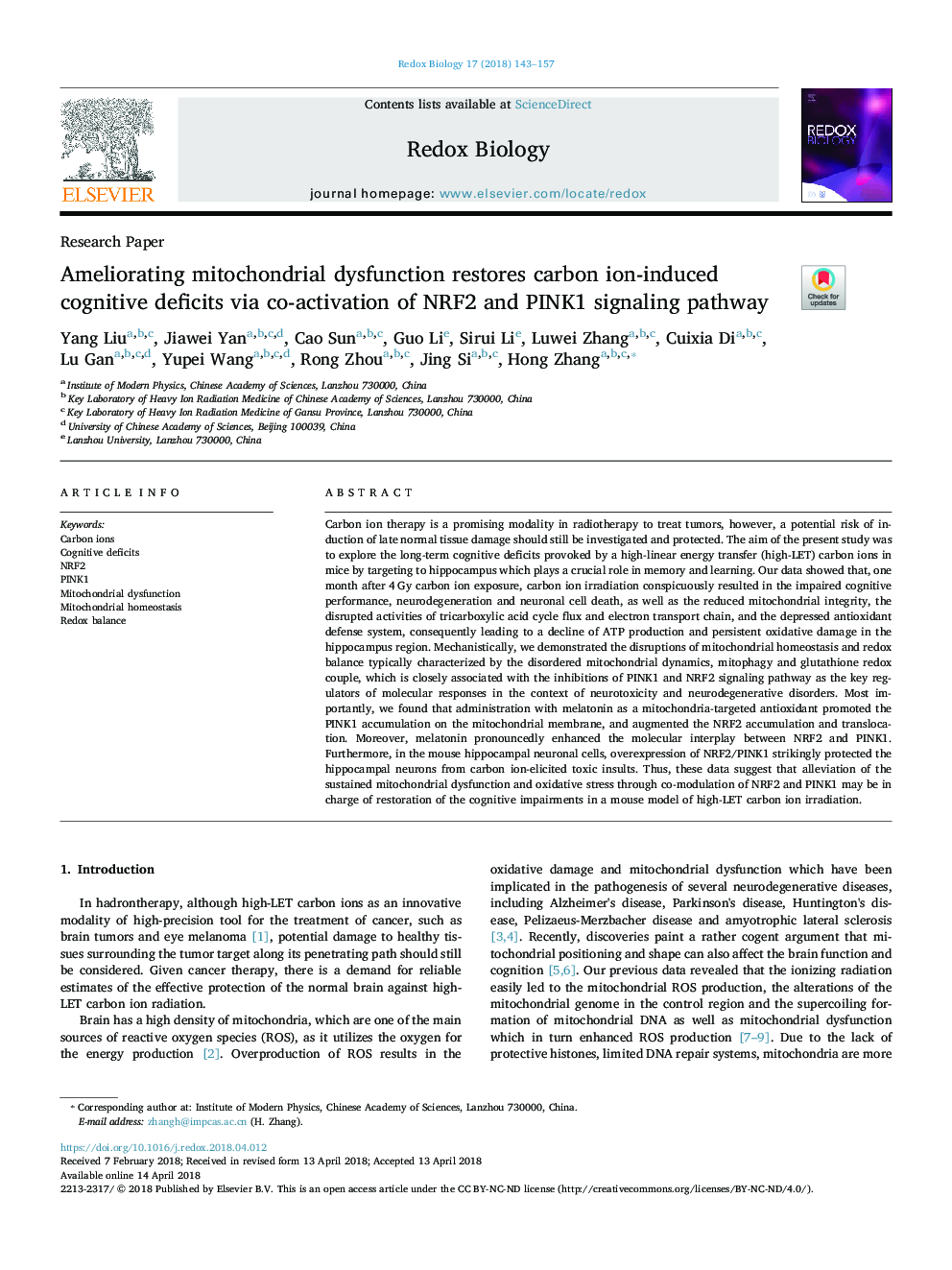| Article ID | Journal | Published Year | Pages | File Type |
|---|---|---|---|---|
| 8286416 | Redox Biology | 2018 | 15 Pages |
Abstract
Carbon ion therapy is a promising modality in radiotherapy to treat tumors, however, a potential risk of induction of late normal tissue damage should still be investigated and protected. The aim of the present study was to explore the long-term cognitive deficits provoked by a high-linear energy transfer (high-LET) carbon ions in mice by targeting to hippocampus which plays a crucial role in memory and learning. Our data showed that, one month after 4â¯Gy carbon ion exposure, carbon ion irradiation conspicuously resulted in the impaired cognitive performance, neurodegeneration and neuronal cell death, as well as the reduced mitochondrial integrity, the disrupted activities of tricarboxylic acid cycle flux and electron transport chain, and the depressed antioxidant defense system, consequently leading to a decline of ATP production and persistent oxidative damage in the hippocampus region. Mechanistically, we demonstrated the disruptions of mitochondrial homeostasis and redox balance typically characterized by the disordered mitochondrial dynamics, mitophagy and glutathione redox couple, which is closely associated with the inhibitions of PINK1 and NRF2 signaling pathway as the key regulators of molecular responses in the context of neurotoxicity and neurodegenerative disorders. Most importantly, we found that administration with melatonin as a mitochondria-targeted antioxidant promoted the PINK1 accumulation on the mitochondrial membrane, and augmented the NRF2 accumulation and translocation. Moreover, melatonin pronouncedly enhanced the molecular interplay between NRF2 and PINK1. Furthermore, in the mouse hippocampal neuronal cells, overexpression of NRF2/PINK1 strikingly protected the hippocampal neurons from carbon ion-elicited toxic insults. Thus, these data suggest that alleviation of the sustained mitochondrial dysfunction and oxidative stress through co-modulation of NRF2 and PINK1 may be in charge of restoration of the cognitive impairments in a mouse model of high-LET carbon ion irradiation.
Keywords
Related Topics
Life Sciences
Biochemistry, Genetics and Molecular Biology
Ageing
Authors
Yang Liu, Jiawei Yan, Cao Sun, Guo Li, Sirui Li, Luwei Zhang, Cuixia Di, Lu Gan, Yupei Wang, Rong Zhou, Jing Si, Hong Zhang,
